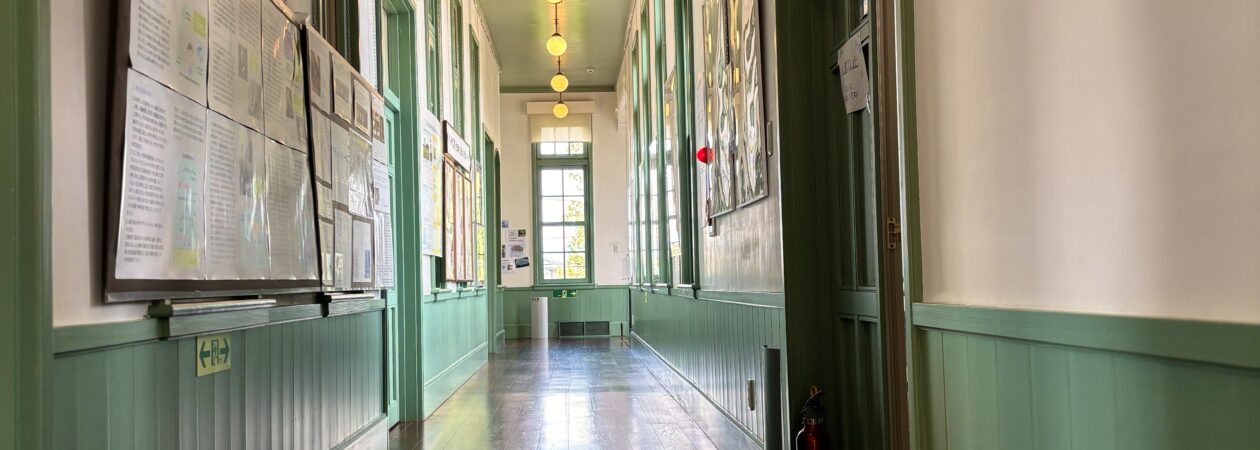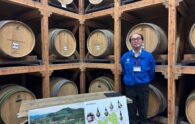If you visit Oshu in Iwate Prefecture, near the proposed site for the ILC (International Linear Collider), you’ll see the letter Z everywhere you look.
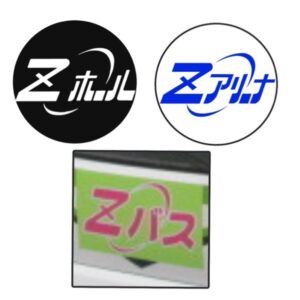
<Z logos>
You might go to a concert at the Oshu Cultural Center, the “Z Hall”. Or you might work up a sweat at the Oshu Central Gymnasium, the “Z Arena”. You might go to buy local Oshu specialties at the “Z Plaza”, and to get around the city, you’ll take the “Z Bus”.
All the city’s major locations are crowned with the letter Z. Do you know why?
A Town at 39°08’
To find out, we have to go back in time to 1899.
In 1899, the International Latitude Service (ILS) was established to study the phenomenon of polar motion, where the positions of the North and South Poles move relative to the Earth’s surface. Japan volunteered for the service and became the host of one of six observation points around the world.
The observation points had to fulfill one condition: they each had to be located on the parallel 39°08’ north. Fitting that condition in Japan was the Mizusawa region, known today as Oshu. (The other locations were Chardzhou (Russia), Carloforte (Italy), Gaithersburg (US), Cincinnati (US) and Ukiah (US).)
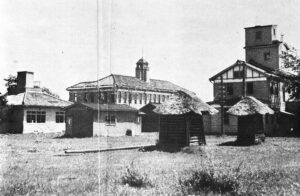
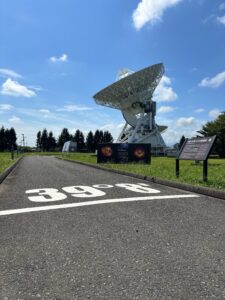
<The observatory in 1899> & <The observatory today>
The Birth of Z
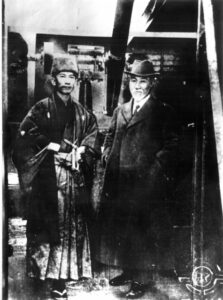
A temporary latitude observatory was set up in Mizusawa with Hisashi Kimura as its founding chief to begin astronomical study. Each night, the six observatories around the world measured the distance to certain stars in order to calculate the tilt of the Earth. But not long after observation began, the central office in Germany declared that Japan’s results were not accurate and could not be fully trusted.
Chief Kimura inspected their observation methods and equipment over and over again, but could not find any issues. Confident of this, in 1902 he re-examined each of the six observatories’ results, and realized that they all displayed the same pattern. When he added a term Z to each measurement, the data became consistent. From this, Chief Kimura understood that the observation data from Mizusawa wasn’t wrong, but actually the most accurate. This great discovery was the beginning of “Z” in Mizusawa and Oshu.
The Answer 68 Years Later
When Chief Kimura determined the existence of the Z term, it was still a mystery as to what it actually represented. The truth was uncovered in 1970, 68 years after the Z term’s discovery. Surprisingly, the one to figure it out was Yasujiro Wako, a young researcher in Mizusawa who was continuing the study.
Mr. Wako’s research demonstrated that the Earth’s complex behavior was caused by the soft liquid core hidden in its interior. As if by fate, the truth of the Z term was revealed in the same place it was first discovered.
From the Z Term to a Regional Symbol
In this way, the “Z” grew from its birth in Mizusawa as a simple mathematical term into the living, breathing symbol of Oshu that you find all over town today. If you see the letter Z on your visit to Oshu, please take the time to appreciate the scientific challenge and regional pride held within it.
An Observatory Reborn
The former observatory has been rebuilt and opened to the public as the Oshu Space & Astronomy Museum, where you can learn about space while walking in the footsteps of Hisashi Kimura and Yasujiro Wako. Of course, it also features a display on the ILC and how it solves the mysteries of space!
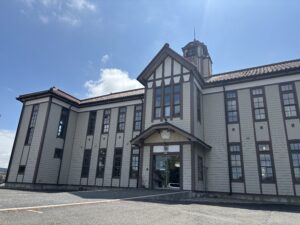
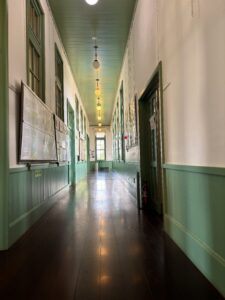
Every October, the museum hosts the Iwate Ginga Festa. This year, it’s planned for October 11, and will feature a wealth of events for families to explore space and science together.
If you’ve learned the meaning behind the “Z” today, please come to Oshu and experience its story for yourself! We look forward to seeing you!
Japanese
「Z」のストーリーILC(国際リニアコライダー)の建設候補地近くにある岩手県奥州市を訪れると、いたるところで「Z」の文字が目に入ります。
コンサートに行ってみると、奥州市文化会館は「Zホール」、汗を流しにきた奥州市総合体育館は「Zアリーナ」、奥州市の名産を買おうと訪れたお店は「Zプラザ」、市内の移動手段は「Zバス」。
市内の主要な箇所には、すべて「Z」の冠がつけられているのです。なぜだか知っていますか?
【39度8分のまち】
それを解き明かすには、1899年までさかのぼります。
当時世界では、地球の北極と南極の位置が地球の地面に対して運動する現象(極運動)の観測を目的として、国際緯度観測事業(ILS)が開始されました。その事業に日本が手を挙げたことから、世界6か所の観測地のうちのひとつとなったのです。
その観測地の世界共通の条件は、「39度8分線上」にあること。この条件にあてはまったのが、現・奥州市の「水沢」地域だったのです。(他は、ロシア:チャルジュイ、イタリア:カルロフォルテ、アメリカ:ゲイザーズバーグ、シンシナチ、ユカイア)
【Zの誕生】
そして、木村栄(きむらひさし)氏を初代所長として、水沢に臨時緯度観測所を設け、天文の観測が始まりました。どのような観測かというと、世界6か所の観測所で星との距離を毎晩測って、地球の傾きを調べるものです。しかしながら、観測からまもなくして、ドイツの中央局から「日本の結果が正しくない」「半分しか信用できない」と指摘されてしまいました。
それから木村所長は、観測の方法や観測の機械を何度も点検しましたが、どこにも欠陥は見当たりません。1902年、これに自信を得た木村所長は、各観測所の結果を再検討し、すべて同様の変化があること、そして観測データに共通の「Z」の項を入れて示すとすべてのつじつまが合うことに気が付いたのです。これによって、水沢の観測データは正しくないどころか、最も優秀なものであることもわかりました。この世紀の大発見が奥州市水沢の「Z」の始まりです。
【68年後の答え】
しかしながら、「Z」の正体は木村所長がその存在を突き止めた当時には、まだ謎のままでした。この正体が解き明かされたのは、Z項の発見から68年後の1970年のことです。驚くべきは、その正体を突き止めたのが、やはりここ水沢の地で観測を続けていた若き研究者、若生康二郎(わこうやすじろう)氏だったということです。
若生氏が明らかにしたのは、地球内部にひそむ柔らかい流体核が引き起こす、複雑な地球のふるまいでした。まるで運命に導かれるように、Z項は、発見された場所で再びその真実の姿を現したのです。
【Z項から地域のシンボルへ】
こうして、水沢で生まれた「Z」は、単なる数式の項を超え、奥州市のシンボルとして町のいたるところに息づいているというわけです。みなさんが奥州市を訪れ、「Z」の文字を目にしたとき、そこに秘められた科学の挑戦と地域の誇りを感じ取っていただければ幸いです。
【生まれ変わる観測所】
かつての観測所はというと、「奥州宇宙遊学館」として再構築され、木村栄氏や若生康二郎氏の足跡をたどりながら、宇宙や星について楽しく学べる場所として多くの人に開かれています。もちろん、宇宙の謎を解き明かす「ILC」のコーナーもありますよ!
毎年10月には、「銀河フェスタ」というお祭りが開催されています。今年は10月11日開催予定。宇宙や科学に触れながら、家族で楽しめる催しが盛りだくさんです。
「Z」の意味を知ったみなさんにこそ、ぜひ奥州市を訪れて、「Z」のストーリーを体感してほしい――そんな想いを込めて、お待ちしています。
